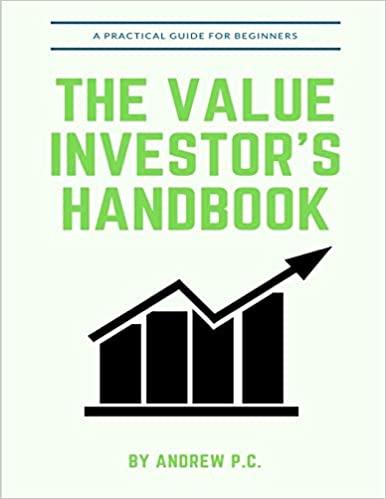Question
[You can Choose to answer only B or C] Suppose there were two skills that you could acquire: tax planning and investing expertise. But suppose
[You can Choose to answer only B or C] Suppose there were two skills that you could acquire: tax planning and investing expertise. But suppose you could only learn one. You are faced with the following fact pattern. There are formulas on the next page that might help. You are endowed with $5,000 of after-tax cash and 20-year investment horizon. You have a marginal tax rate of 40% and you expect to face the same rate over the next 20 years. You expect that investing passively in an index fund will generate a 10% return each year, pretax, for the next 20 years. The future value of a $1 investment for 20 periods is as follows: R Factor 6% 3.207 8% 4.661 10% 6.728 12% 9.646 14% 13.744 A. You choose to learn tax planning and invest passively. You invest in a 401(k) account (or similar tax-deferred vehicle) such that the after-tax cash cost of the investment is $5,000. What is the after-tax future value of your investment? _____________________________
B. Now instead choose investing expertise. You actively manage a portfolio in your personal brokerage account (not in a 401(k) or IRA) and thus have no deferral of taxes on your returns. You hold no stock longer than 1 month. What would your annual pretax return have to be to simply match the above basic tax planning? _____________________________
C. But what if you just thought you could beat the market but really couldnt and your active management yielded a 10% pretax return per year? What is the after tax future value of your investment? Ignore transactions costs. _____________________________
D. But, of course, tax planning and investing expertise are not mutually exclusive. What if you can beat the market and be a good tax planner? What is the after-tax future value of your investment? You invest in a 401(k) account (or similar tax-deferred vehicle) such that the after-tax cash cost of the investment is $5,000. For the purposes of this question, assume that you can generate a 14% pretax return each year for the next 20 years.
Step by Step Solution
There are 3 Steps involved in it
Step: 1

Get Instant Access to Expert-Tailored Solutions
See step-by-step solutions with expert insights and AI powered tools for academic success
Step: 2

Step: 3

Ace Your Homework with AI
Get the answers you need in no time with our AI-driven, step-by-step assistance
Get Started


